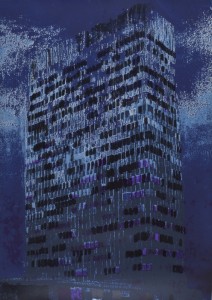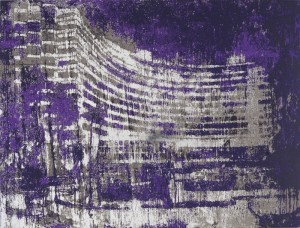Enoc Perez
© Enoc Perez 2011, “Lever House (Silver),” screenprint. 48.25″ x 34″ image and sheet, edition of 20. Not available.
© Enoc Perez 2011, “Lever House (Red),” screenprint. 48.25″ x 34″ image and sheet, edition of 20. Not available.
© Enoc Perez 2011, “Lever House (Purple),” screenprint. 48.25″ x 34″ image and sheet, edition of 20. Current price: $5,000
© Enoc Perez 2011, “Lever House (Indigo),” screenprint. 48.25″ x 34″ image and sheet, edition of 20. Not available




